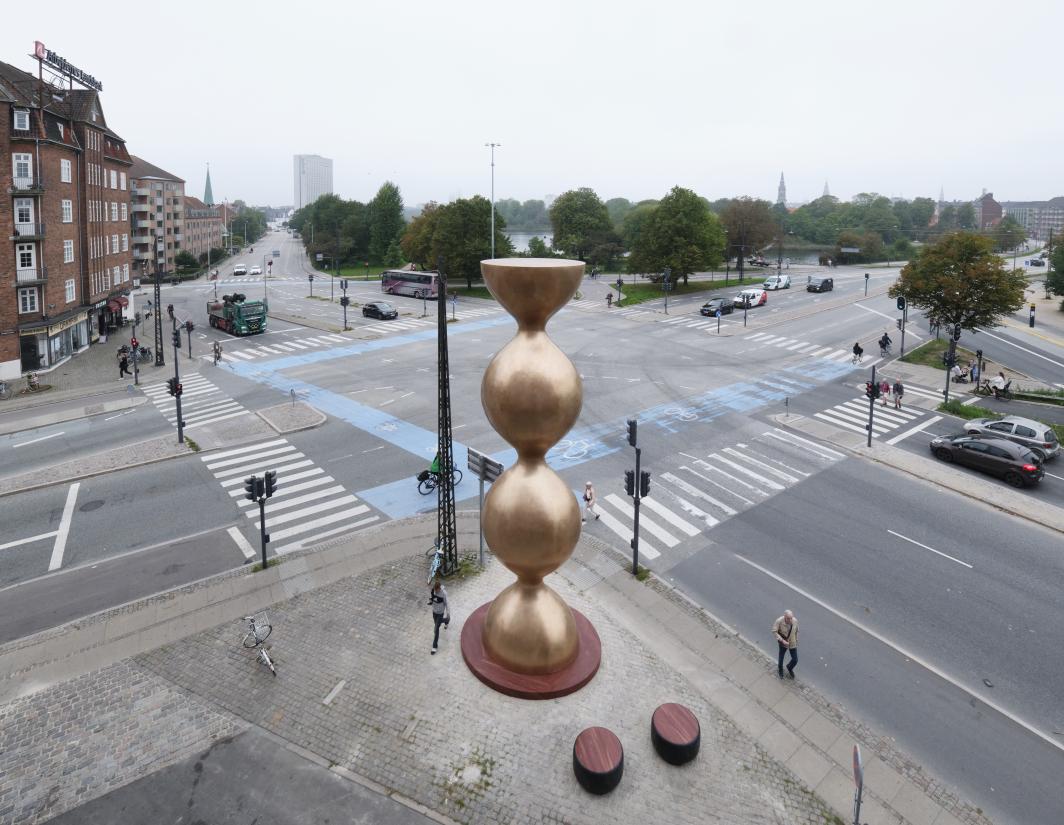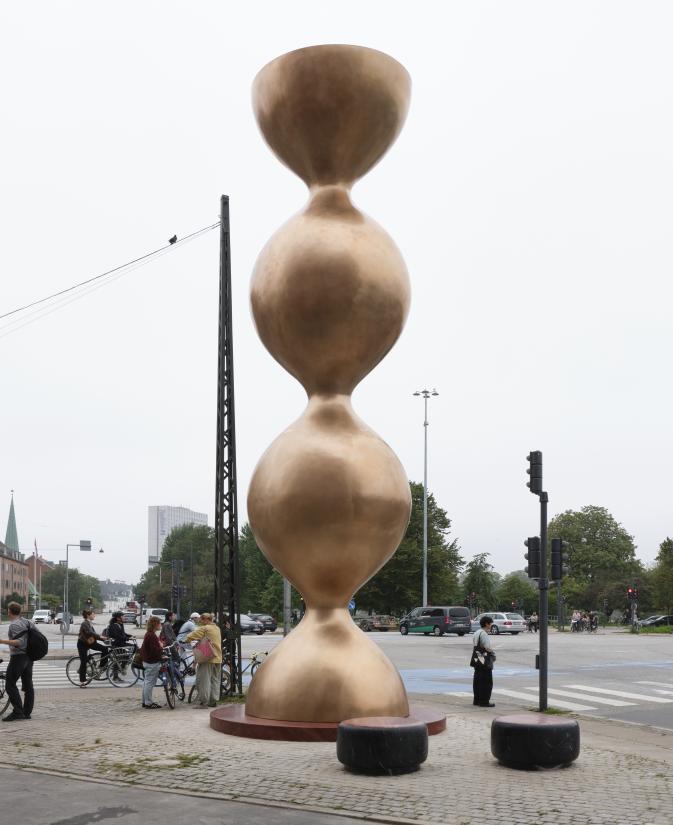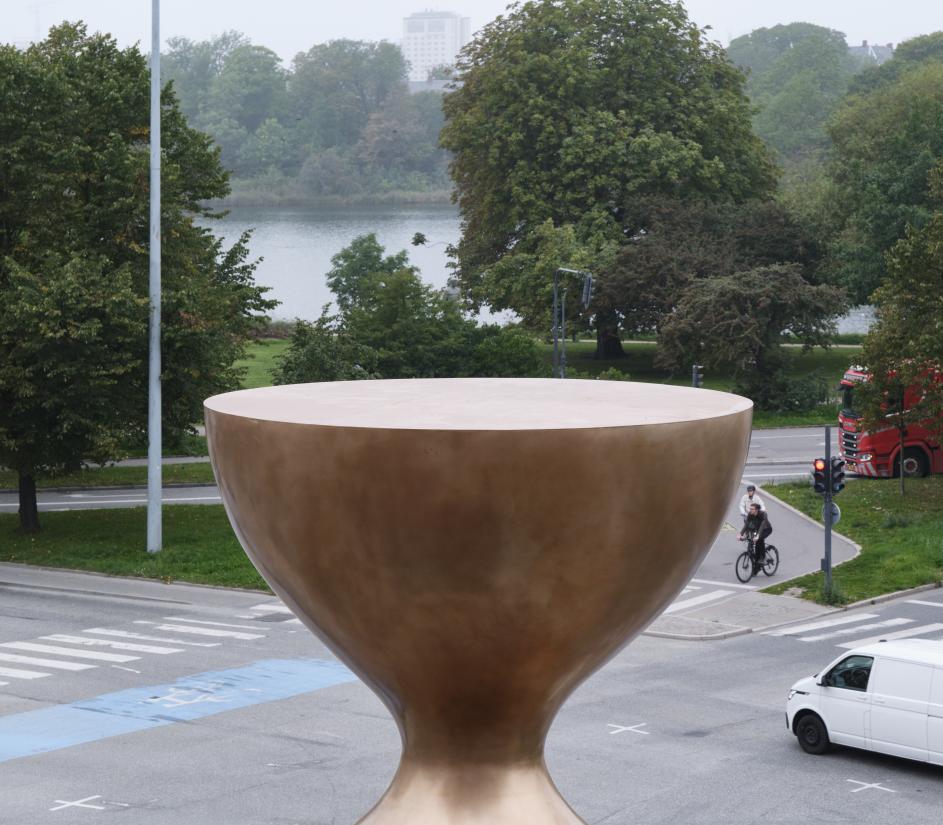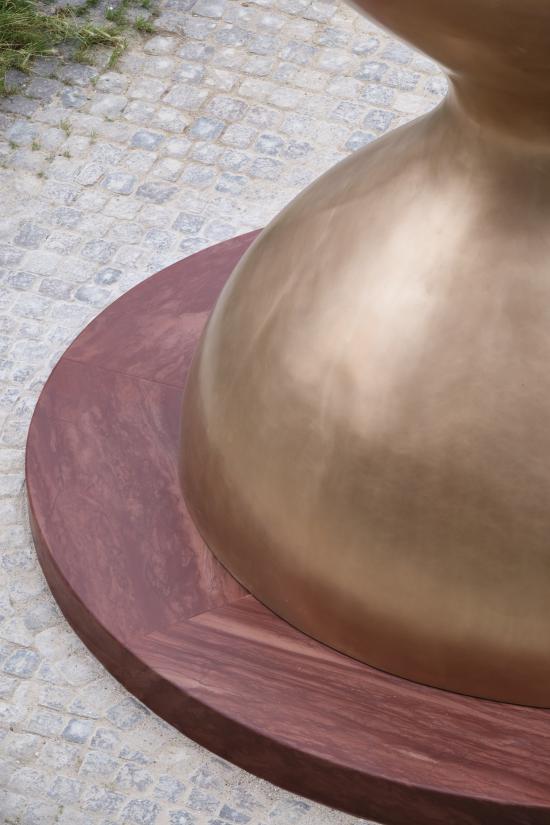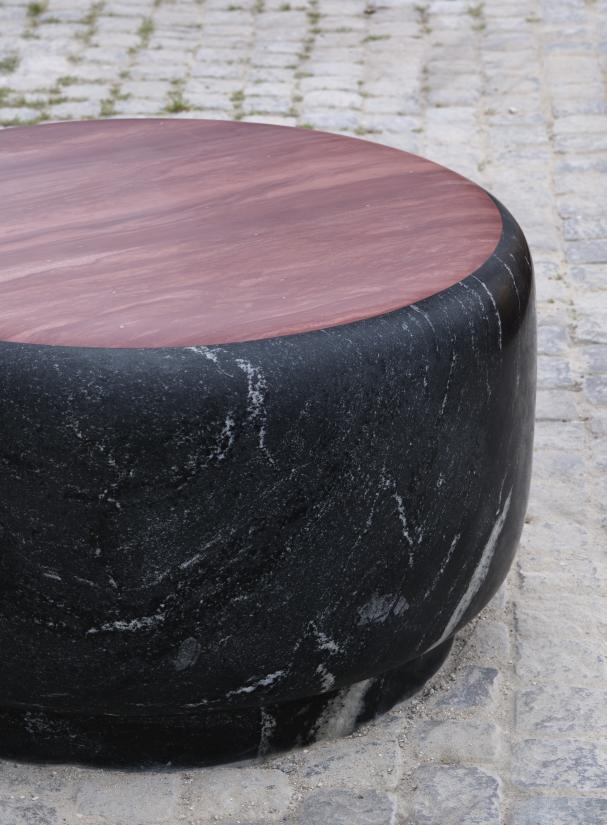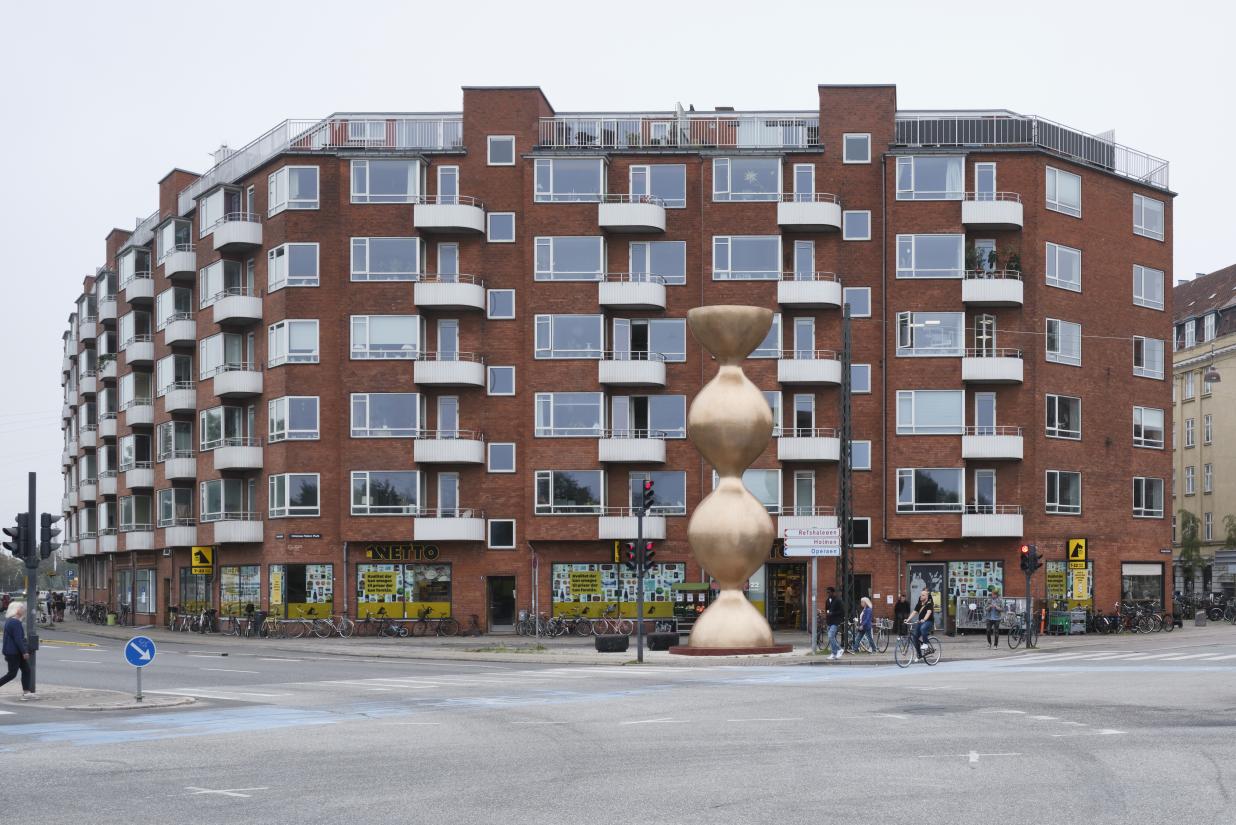Sophia Kalkau’s sculpture Zygote, consisting of a symmetrical bronze and two stone seats in Brazilian flamingo quartzite, is a site-specific piece created for Christmas Møllers Plads, a square that connects the Copenhagen districts of Amager and Christianshavn. The location is a busy traffic junction with views of architectural landmarks such as the spire of the Church of Our Saviour and the bell tower on Kong Haakons Kirke (King Haakon’s Church). The geometric shapes of these iconic Copenhagen landmarks were part of the artist’s inspiration for the project.
The New Carlsberg Foundation commissioned the sculpture for Christmas Møllers Plads from Sophia Kalkau based on an application from the local municipal committees for Amager West and East. The committees wished to add an artistic dimension to the new street section at the end of Amagerbrogade, which was completed in 2020, and applied for funding to realize this vision.
‘Zygote engages in dialogue with its environment and with the history behind the square, which is named after the Conservative politician John Christmas Møller, who called for national resistance against the German Wehrmacht. His radio transmissions via BBC are iconic, as is his statement from 1945, “We are all socialists”. These words formed the inspiration for the sculpture and for the title, which means yoke or yoked together and is also used as the term for a fertilized egg. The sculpture has a calm, monumental, simple presence on the busy, pulsating site and engages in a geometric and historical interplay with the sphere and the spiral on the Church of Our Saviour and the pyramid and prism on Kong Haakons Kirke. Over time, the bronze will patinate, and the sculpture will become an ever-changing landmark at the entrance to the island,’ says visual artist Sophia Kalkau.
‘Art in the public space has so much to offer. It adds soul to the city and makes us pause, think and reflect. I would like to thank Sophia Kalkau, the two local municipal committees for Amager and the New Carlsberg Foundation for this new Copenhagen sculpture that yokes Amager and Christianshavn together. Copenhagen is so much more than the city’s countless statues of historically significant men and their horses. We need much more contemporary art on our streets,’ says Lord Mayor Sophie Hæstorp Andersen (party: Social Democrats).
‘The New Carlsberg Foundation supports efforts to place art where people go about their daily lives, so when we received this application from the City of Copenhagen in connection with the major transformation of the street section at the end of Amagerbrogade, we had no doubt that this was a worthy cause. Every day, many people, locals and visitors alike, pass through this area and will thus encounter the artwork. In response to the application for the project “Art on Amagerbrogade”, the New Carlsberg Foundation has supported the realization of Christians Lemmerz’s Godot at the intersection of Amager Boulevard and Amagerbrogade and now this unique piece, Zygote, created by one of the most significant Danish artists, Sophia Kalkau,’ says Christine Buhl Andersen, chairperson of the New Carlsberg Foundation.
A distinctive welcome to the island of Amager
The sculpture’s meticulous geometry appears either elliptical or drop-shaped, depending on the vantage point, and is mirrored on both the horizontal and the vertical axis, forming a double hourglass in bronze or a chain of links that can be repeated infinitely.
Sophia Kalkau titled the piece Zygote with inspiration from the Greek word ‘zygon’ meaning ‘yoke’ or ‘to yoke’. The geometric shapes of the sculpture reflects the yoke, a wooden bar that is placed over the shoulders to distribute the weight and make it possible to carry a heavy burden. The shapes also refer to the function of the square, which yokes Christianshavn to Amager, or Amager to Christianshavn.
About Sophia Kalkau
Sophia Kalkau (b. 1960) graduated from the Royal Danish Academy of Fine Arts in 1996 as a visual artist with a BA in art theory. Since then, she has become a significant figure in the Danish contemporary art scene and has received many accolades for her artistic practice, including the Danish Arts Foundation’s three-year working grant (2001), Astrid Noack’s Grant (2004), the Eckersberg Medal (2008) and the New Carlsberg Foundation’s Artist Grant (2016). Sophia Kalkau has authored collections of poetry, essays and writings on art theory, and her works are represented in several Danish art museums, just as she has carried out significant decorative projects in the public space.
At the intersection of photography, sculpture and performance art, Sophia Kalkau creates haunting works of art with a unique expression that reflects the artist’s keen sensibility to both art theory and artistic practice. She often uses her own body in works of art that activate a performative aspect of her work. This includes her series ‘Off White’ (2014), in which Sophia Kalkau, covered by a white sheet, explores her own body as a sculptural topic in 11 photographs and positions. This explorative approach to the artistic process is characteristic to Sophia Kalkau’s practice, which triggers the curiosity of the audience and offers an intriguing freedom of interpretation.
Sophia Kalkau has created a number of distinctive sculptures for the public space. This includes Egyptian Egg (2017), a large, smooth ellipsoid made of Swedish diabase, which is a permanent part of the greenspace around the exhibition building Den Frie Centre of Contemporary Art, and Portaler til Poesi (Portals to Poetry) (2021) in the garden of the Forensic Psychiatry Ward of the Capital Region of Denmark. The latter piece consists of two large drop shapes, two large hexagonal shells and a planet in bronze and a large star shape in diabase. These sculptures reflect Sophia Kalkau’s fascination with geometry and the amazing complexity that can be achieved by reproducing simple shapes, which contain a wealth of references to art history but which are also open to simply being experienced on an intuitive level. As an artist, Sophia Kalkau excels at creating and producing sculptural shapes that affect and challenge the viewer.
